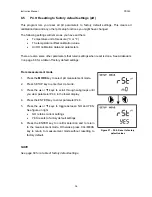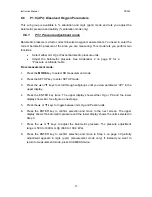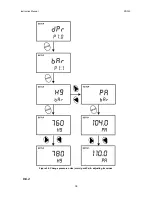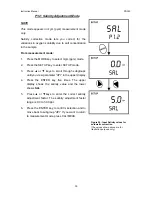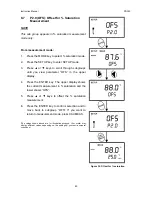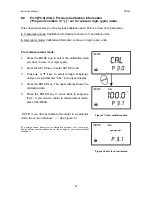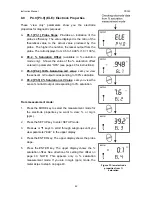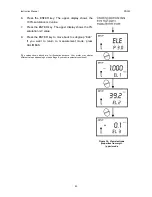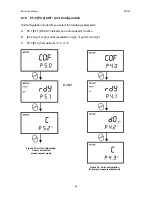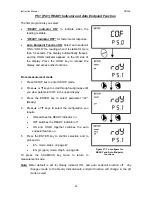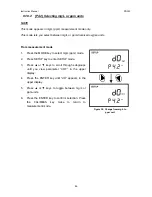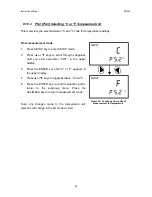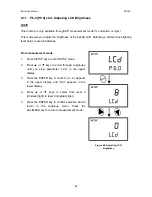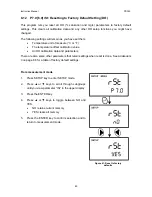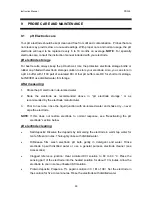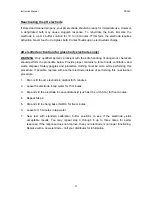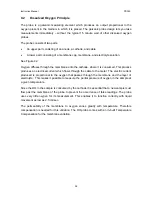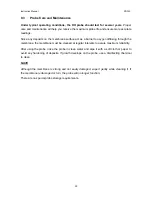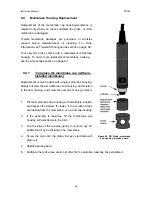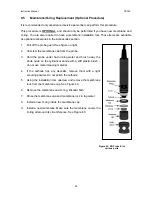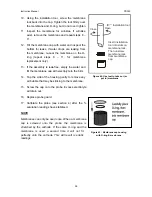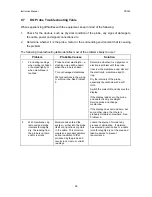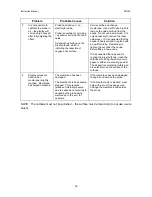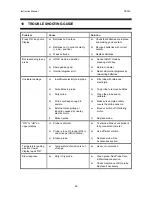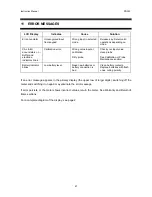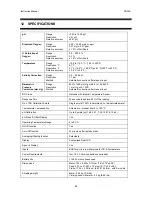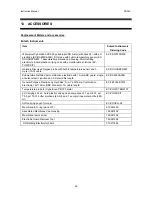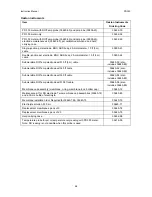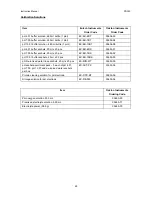
Instruction Manual
PD 300
9
PROBE CARE AND MAINTENANCE
9.1
pH Electrode care
Your pH electrode should be kept clean and free from dirt and contamination. Probes that are
not clean may provide slow or unusual readings. With proper care and normal usage, the pH
electrode will need to be replaced every 6 to 18 months on average.
NOTE
: For specialty
electrode care, consult the instruction manual included with your electrode.
pH electrode storage
For best results, always keep the pH bulb wet. Use the protective electrode storage bottle or
rubber cap filled with electrode storage solution to store your electrode. Also, you can store in
a pH 4 buffer with 1/100 part of saturated KCl. Other pH buffers are OK for short term storage,
but NEVER use distilled water for storage.
After measuring
1.
Rinse the pH electrode in de-ionised water.
2. Store the electrode as recommended above in “pH electrode storage,” or as
recommended by the electrode manufacturer.
3. Prior to next use, rinse the liquid junction with de-ionised water and shake dry – never
wipe the electrode.
NOTE
: If this does not restore electrode to normal response, see “Reactivating the pH
electrode” section below.
pH electrode cleaning
•
Salt deposits: Dissolve the deposits by immersing the electrode in warm tap water for
ten to fifteen minutes. Thoroughly rinse with distilled water.
•
Oil/Grease film: wash electrode pH bulb gently in detergent and water. Rinse
electrode tip with distilled water or use a general purpose electrode cleaner (see
Accessories).
•
Clogged reference junction: Heat a diluted KCl solution to 60 to 80 °C. Place the
sensing part of the electrode into the heated solution for about 10 minutes. Allow the
electrode to cool in some unheated KCl solution.
•
Protein deposits: Prepare a 1% pepsin solution in 0.1 M of HCl. Set the electrode in
the solution for five to ten minutes. Rinse the electrode with distilled water.
50

